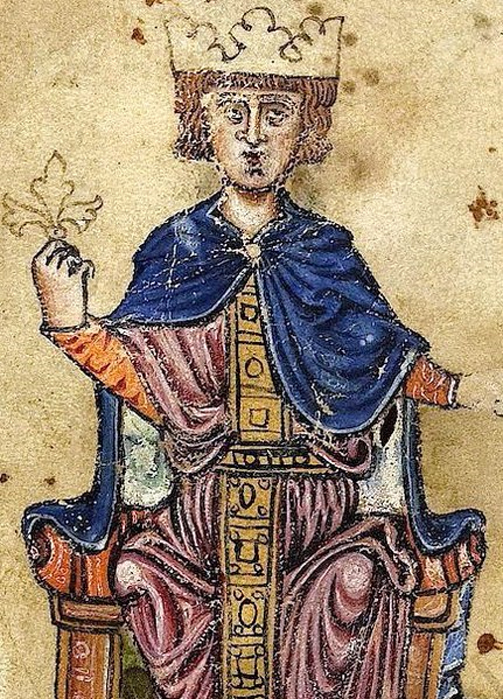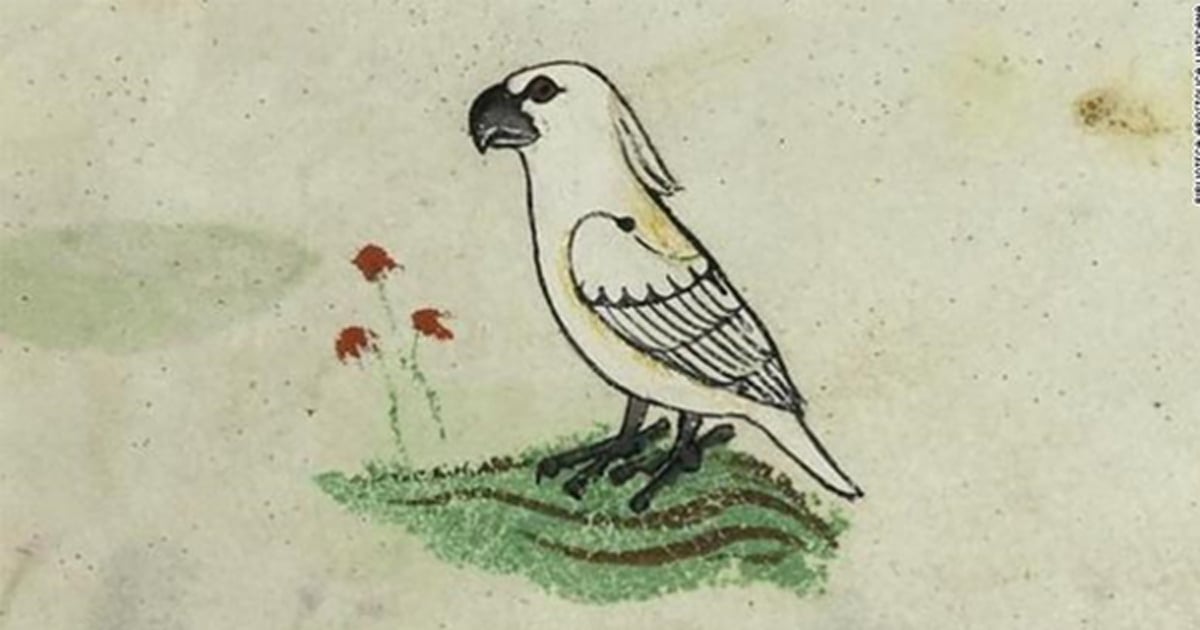The Dark Legacy of an Exotic Parrot Gifted to an Ancient Emperor
Four images of an Australasian white cockatoo discovered in a 13th century Sicilian manuscript have reset historical models of the European “discovery’ of Australia. What is more, they mark the beginnings of an illegal trade which has decimated wild populations.
Archeologists and anthropologists now know that Australia's northern seas were being navigated in early medieval times and "linked into sea and overland routes to Indonesia, China, Egypt and beyond into Europe,” according to a paper recently published in Paragon Journal.
- An Ancient Australian Connection to India?
- Written in Stone: Neolithic Weapons and Tools of the Australian Aboriginals
- Ancient African Coins Found in Australia Pose Interesting Questions About the Nation’s History

Colored map of South East Asia to Australia by Caspar Schmalkalden (c.1618-c.1668). (Public Domain)
The white cockatoo painting features in a text called De Arte Venandi cum Avibus (The Art of Hunting with Birds) which belonged to Frederick II of Sicily, and dates to between 1241 and 1248. What has created a stir, is that the ‘Holy Roman Emperors’ unique colored drawings were created 250 years prior to what was previously believed to be the oldest European depiction of a cockatoo!
Fit for an Emperor
According to a report in an article in Phys.org, in 2014, Honorary Research Fellow Heather Dalton of the ‘Faculty of Arts School of Historical and Philosophical Studies’ published an article about the cockatoo which featured in Andrea Mantegna's 1496 altarpiece ‘Madonna della Vittoria’. Then, three Finnish scholars from the Finnish Institute in Rome “realized they had found much older depictions.” Collaborating with Dr. Dalton, the team of four scientists translated the Latin text beside the images revealing that the exotic bird was a “gift from the fourth Ayyubid Sultan of Egypt to Frederick II,” who referred to him as the 'Sultan of Babylon'.

Frederick II, Holy Roman Emperor. 13 th century. (Public Domain)
Dr. Dalton retraced the cockatoos journey from Australasia to Cairo, and then on to Sicily, which would have taken several years, “primarily over land.” They also established that the cockatoo was likely to have been either “a female Triton or one of three sub-species of Yellow-crested Cockatoo (also known as Lesser Suphur-crested).”
Discovery of Australia
Many historians claim the Portuguese ‘discovered’ Australia in the 1520s, but the first documented European landing in Australia was made by a Dutch East India Company ship in 1606. The first major European settlement of Australia happened on 26 January 1788 at Port Jackson (modern Sydney, New South Wales), when more than 1,000 convicts, marines, and seamen, founded a vast penal colony in New South Wales. All these theories, however, fall under the shadow of the original “Out of Africa” discovery of Australia, the timing of which is an unresolved question.
- Hippalos: Early Navigation of Deep Sea Routes Between India and Egypt – Part I
- Amazing Discovery that Could Rewrite Australian History
- Extensive Neolithic Trading Network Uncovered in the Mekong Delta, Vietnam

View of the heads at the entrance to Port Jackson New South Wales 1824 by Joseph Lycett. (CC BY 2.0)
The Originals
According to a recent article published in the New York Times, the discovery of more than 10 000 artifacts at a site in Madjedbebe, Mirrarr Country, dated to be at least 65,000 years old, told archeologists that Aboriginal people not only used “elaborate lithic technologies and colored objects with red-ochre crayons and pigments” but microfossils and residue found on grinding stones revealed the “earliest evidence of seed grinding and pigment processing and use of edge-ground hatchets in the world.” “We were gobsmacked by the richness of material and no one dreamed of a site so rich and so old in Australia” said Chris Clarkson, an archaeologist from the University of Queensland in Australia and lead author of the study published in journal Nature, on July 12th 2017.
![One of the four images of the cockatoo gifted to Frederick II by the ‘Sultan of Babylon’. Codex Ms. Pal. Lat 1071, folio 20v Source: © [2018] Biblioteca Apostolica Vaticana](https://www.ancient-origins.net/sites/default/files/styles/large/public/One-of-the-four-images.jpg?itok=y4eMz6hI)
One of the four images of the cockatoo gifted to Frederick II by the ‘Sultan of Babylon’. Codex Ms. Pal. Lat 1071, folio 20v Source: © [2018] Biblioteca Apostolica Vaticana
Back to the cockatoo, Dr. Dalton said:
“The fact that a cockatoo reached Sicily during the 13th century shows that merchants plying their trade to the north of Australia were part of a flourishing network that reached west to the Middle East and beyond.”
Feather Trade
What hasn’t been mentioned yet is that the particular parrot, delivered to Frederick II as a gift, marked the beginnings off an illegal trade that has brought wild cockatoo populations to their knees.
The illegal trade of protected parrots violates Indonesian Act Number 5, 1990 (a wildlife law concerning Natural Resources and the Ecosystems Conservations) but this seems to have taken little effect as an effective deterrent. According to BirdLife International, who just recategorized the white cockatoo as a “Red List” or Highly-Endangered:
“This species has undergone a rapid population decline, principally owing to unsustainable levels of exploitation, and declines are predicted to become very rapid in the future based on projected future rates of forest loss along with continued pressure from illegal trade”

White Cockatoo is now a categorized as Highly Endangered (CC0)
What is more, “catch quotas issued by the Indonesian government were exceeded by up to ’18 times’ in some localities in 1991, with at least 6,600 umbrella cockatoos being taken from the wild by trappers.” At least 200+ birds were illegally trapped in north Halmahera in 2007 and investigators know that “approximately 40% were smuggled to the Philippines, while the remaining 60% went to the domestic Indonesian trade, especially via bird markets in Surabaya and Jakarta.”
What this basically means is that sometime in the 13th century a shipload of European sailors plundered Australia’s wildlife and created new international markets for its birds, animals and plants. Then, three centuries later, their descendants came up with the brilliant idea of giving something back, so they dumped tens of thousands of prisoners onto the island in the colonial expansion of European power through the labor of convicts.
Nothing like a bit of give and take (sighs).
Top image: One of the four images of the cockatoo gifted to Frederick II by the ‘Sultan of Babylon’. Codex Ms. Pal. Lat 1071, folio 20v Source: © [2018] Biblioteca Apostolica Vaticana
By Ashley Cowie



















